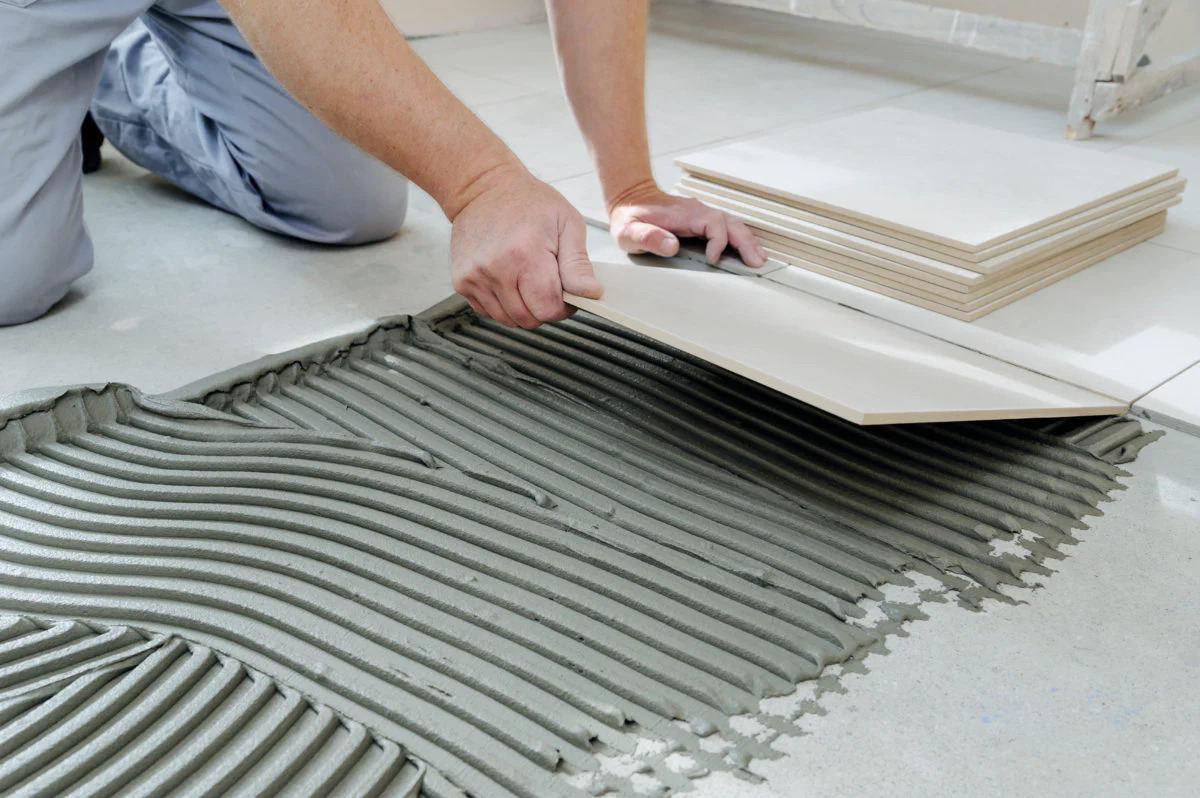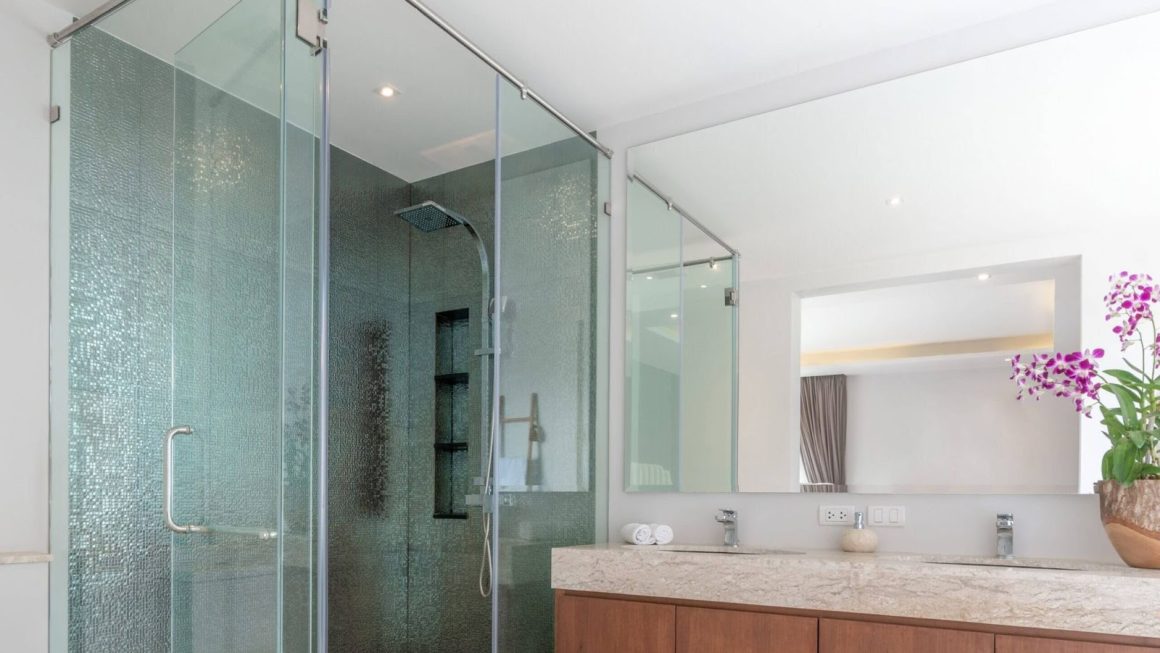As you step into your newly renovated kitchen, the first thing that captures your attention is not the sleek countertops or the modern appliances, but the floor beneath your feet. Its texture, pattern, and warmth make the room feel inviting and complete. This is the magic of choosing the right floor tiles. Just like a carefully chosen painting can add life to a blank wall, the correct floor tiles can drastically transform your space, infusing style and functionality. In this blog post, we’ll take you on a journey through the fascinating world of floor tiles, helping you make the best choice for your home.
Discovering the Wide World of Floor Tiles
Floor tiles come in a vast array of materials, colors, sizes, and styles, offering a world of design possibilities. Some of the most popular types of floor tiles include ceramic, porcelain, natural stone, vinyl, and glass. Each of these materials brings its own unique aesthetic and functional characteristics:
Ceramic Tiles: Ceramic tiles are made from clay that’s been heated in a kiln. They’re versatile, durable, and affordable, making them a popular choice for many homeowners. They come in a wide range of colors and designs and are relatively easy to maintain.
Porcelain Tiles: Porcelain tiles are a type of ceramic tile that’s made from more refined clay and fired at higher temperatures. This makes them denser, more durable, and less porous than standard ceramic tiles, which makes them a good choice for high-traffic areas and outdoor use. Porcelain tiles can mimic the look of natural stone, wood, or even fabric.
Natural Stone Tiles: Natural stone tiles, like marble splashback Sydney, granite, slate, and travertine, add a touch of elegance and sophistication to any room. They’re durable and long-lasting, but they do require more maintenance than ceramic or porcelain tiles. Natural stone tiles need to be sealed to protect them from stains and damage.
Vinyl Tiles: Vinyl tiles are a budget-friendly option that’s easy to install and maintain. They’re comfortable underfoot and available in a wide range of colors and patterns. Vinyl tiles can also mimic the look of other materials, like wood or stone.
Glass Tiles: Glass tiles are a stylish and contemporary choice that’s often used for accent areas rather than full floors. They’re resistant to stains, mold, and mildew, and they reflect light, which can make a room appear larger and brighter.
Choosing the right tile for your home will depend on your budget, style preferences, and the particular needs of each room in your home. In terms of maintenance, it’s essential to consider the regular cleaning requirements of the tile, its durability, and how easy it is to repair or replace if damaged.
The most common issues with floor tiles include chips, cracks, loose tiles, and grout problems. While minor issues can often be repaired, more severe or widespread damage may necessitate a full floor replacement. Repairing tiles is usually less expensive and quicker, but you may encounter difficulties matching the materials, and the solution may only be temporary.
Choosing the Perfect Tile for Your Space
Choosing the perfect tile for your space involves several considerations, including the room’s function, the tile’s durability, your budget, and your personal style. Here’s a more detailed guide to help you make the best choice:
- Consider the Room’s Function: The room in which the tile will be installed plays a significant role in the type of tile you should choose. For instance, marble bathroom tiles and kitchens require tiles that can withstand moisture and are easy to clean, such as porcelain or glazed ceramic tiles. For high-traffic areas like hallways and entryways, durability is key, so consider tougher materials like porcelain or natural stone. Bedrooms and living rooms, which have less foot traffic, can accommodate a wider range of materials including those that are more delicate or ornate.
- Choose the Right Material: As discussed earlier, floor tiles come in a variety of materials, each with its own benefits and drawbacks. Consider your needs and the characteristics of each material before making your choice. For example, porcelain tiles are very durable and water-resistant, making them suitable for bathrooms and kitchens. Natural stone tiles are beautiful and luxurious but require more maintenance. Vinyl tiles are budget-friendly and easy to install but may not last as long as other options. Granite Supplier provide best granite tiles and granite stone
- Size and Shape Matter: The size and shape of your tiles can significantly affect the look of your room. Large-format tiles can make a small space appear larger, while smaller tiles can add texture and visual interest. Additionally, the shape of the tile can also contribute to the overall aesthetic. Traditional square or rectangular tiles offer a classic look, while hexagonal or arabesque tiles can lend a more modern or unique appeal.
- Color and Pattern: The color and pattern of your tiles can set the mood for your room. Lighter colors can make a room appear larger and more open, while darker colors can add depth and warmth. Bold patterns can create a focal point or add a dramatic flair, while subtle patterns can provide a touch of elegance and sophistication.
- Grout Color: Don’t overlook the color of your grout. Grout can significantly impact the overall look of your tiled surface. A grout color that contrasts with your tiles can highlight the pattern and design, while a matching grout color can provide a more seamless look.
- Consider Your Budget: Lastly, your budget will play a significant role in your choice of tile. Natural stone supplier can offer stone and tiles which can be more expensive than ceramic or porcelain tiles. However, keep in mind the long-term costs. For instance, while ceramic tiles might be cheaper initially, they might not last as long as porcelain tiles and could end up costing more in the long run if they need to be replaced.
Ways of Tile Installation
Installation is where the magic happens, where those beautiful tiles you’ve carefully chosen come to life on your floor. It’s also where the science comes in, as each step of the process requires precision and technical knowledge to ensure a smooth, durable finish.
The process begins with preparation. The old flooring must be removed, and the subfloor cleaned and leveled. This step is crucial as even minor irregularities can lead to problems down the line, such as cracked or loose tiles. It’s the perfect blend of art and science: preparation is the canvas upon which the artwork will be laid, and like any good canvas, it needs to be flawless.
Next comes the layout. This is where you need to tap into your inner artist. The tiles must be arranged in a way that is visually pleasing and complements the room’s dimensions. The trick is to balance the room’s proportions with the tile size and pattern. For instance, larger tiles can make a small room look bigger, while intricate patterns can add depth and interest to a plain space.
Once the layout is set, the installation begins. Each tile must be carefully applied with adhesive and grout, ensuring that they are evenly spaced and level. This is where the science comes in: the adhesive needs to be mixed to the right consistency, the tiles need to be laid at the correct angle, and the grout needs to be applied in a way that it fills the gaps between the tiles without spilling over onto the tile surface. This process requires patience, precision, and a keen eye for detail.
After the tiles are installed, the grout must be sealed to prevent moisture and dirt from seeping in. This step is important for maintaining the beauty and longevity of your floor tiles. Again, science comes into play here: understanding the properties of the grout and the right type of sealer to use is crucial for the success of this step.
Finally, the tiles are cleaned and polished, ready to shine under your feet. This is the moment where the artistry truly shines, as the beauty of the tiles comes to the forefront, transforming your room and bringing your vision to life.
The art and science of tile installation may seem daunting, but with the right knowledge and skills, it can be a rewarding process. It allows you to put your personal touch on your space and create a floor that is not only beautiful but also built to last. Remember, though, that if the process seems too challenging, professionals are always available to help. They bring both the artistic eye for design and the scientific knowledge of materials and techniques to ensure a perfect installation every time.
Tile installation is more than just a home improvement project. It’s a creative journey, a scientific exploration, and a chance to leave your mark on your home. Whether you’re a DIY enthusiast or prefer to hire a professional, understanding the art and science behind it can enhance your appreciation of the process and the final result.
Maintaining the Beauty of Your Tiles
Maintaining the beauty of your tiles involves regular cleaning, dealing with stains promptly, and occasionally, resealing the grout. Below are more detailed tips to help you keep your tiles looking their best:
- Regular Cleaning: This is the most basic yet vital part of maintaining your tiles. Regular sweeping or vacuuming can remove loose dirt and dust before they can scratch the surface of your tiles. For further cleaning, mopping with warm water can help maintain the shine. For deeper cleaning, consider a mild detergent or a product specifically designed for your type of tile. Always remember to rinse thoroughly to remove any leftover cleaning solution.
- Prompt Stain Removal: No matter how careful you are, spills and stains are inevitable. The key is to act fast. Blot spills immediately with a clean cloth to prevent them from soaking into the tile or grout. For stubborn stains, a paste made of baking soda and water can be an effective solution. Apply the paste to the stain, let it sit for a few minutes, then scrub gently with a soft brush.
- Sealing Grout: The grout between your tiles is porous and can absorb spills and stains. To prevent this, consider sealing your grout. This is especially important for areas exposed to a lot of water, like bathrooms and kitchens. Grout sealer is widely available, and the process of applying it is relatively simple. Typically, it involves cleaning the grout, applying the sealer with a small brush, and then wiping off any excess.
- Avoid Harsh Chemicals: While it might be tempting to use bleach or other harsh chemicals for tough stains, these can damage your tiles and grout over time. Instead, opt for gentler cleaners, or those specifically designed for your type of tile.
- Polish for Shine: Over time, your Laundry tiles may lose their shine. To restore their gleam, consider using a polish designed for your type of tile. Always test the product on a small, inconspicuous area first to ensure it doesn’t discolor or damage your tile.
- Professional Cleaning: Occasionally, especially for large or heavily soiled areas, it might be worth getting your tiles professionally cleaned. Professional tile cleaners have specialized equipment and products that can give your tiles a deep clean and help them look their best.
Conclusion: Your Floor, Your Canvas
Floor tiles are more than just a functional element of your home. They’re the canvas upon which you paint the story of your space. Whether it’s the gleam of polished porcelain in your bathroom, the warm, earthy tones of stone in your living room, or the vibrant patterns of ceramic in your kitchen, your choice of floor tiles can dramatically shape the character of your home. You should use floor tiles in bathroom Renovation
We hope this guide has illuminated the world of floor tiles for you. Whether you’re embarking on a full renovation or just looking to freshen up a room, remember to consider not only the aesthetic appeal but also the practical aspects of your tile choice. After all, your floor tiles need to stand up to the rigors of everyday life while also enhancing the beauty of your home.
And now, we turn to you: what kind of floor tiles are in your dream home? How have your tiles transformed your space? We invite you to share your thoughts and experiences in the comments below. Let’s continue the conversation and inspire each other with our unique visions of home.
There are pros and cons to both repairing and replacing tiles. If you choose to repair, it’s generally a less expensive and quicker solution. But there can be challenges, such as finding matching materials and the possibility that the repair might only be a temporary fix. On the other hand, a full replacement can provide a design refresh and a long-term solution, although it comes at a higher price and can be a significant home project.
Remember, floor tile removal and installation is a labor-intensive task. It can take up to 12 hours to remove the tiles and an additional two to three days to lay new ones. If the process seems daunting, hiring a professional can save you time and ensure the job is done correctly



